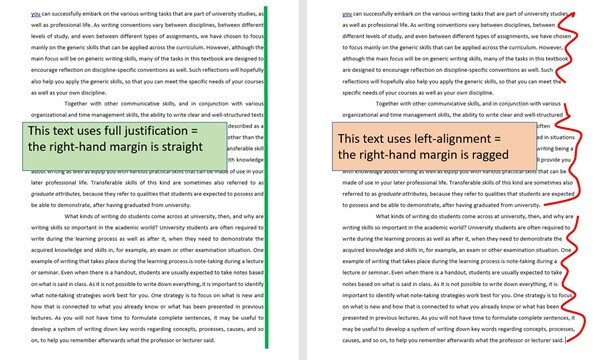Reading and understanding instructions
If you are writing as a student or as a researcher, there will be instructions you are expected to follow. Depending on what type of text, these instructions will contain different elements. Below we bring up two types of instructions:
- Instructions for student writing, such as essay instructions
- Instructions for research writing, such as style sheets for degree projects and publishers' guidelines
Start with the section that fits best with the type of writing you are doing but note that there may be useful informaton in the other section too.
At the bottom of this page, please find a list of
Instructions for student writing
Whether you have been asked to write an essay or an assignment of some other kind, understanding the instructions as well as grading criteria will be essential. Have a look at the video below, and further down we explain some common terms in writing instructions. Always ask your teacher if you have any questions; academic writing is wide field and the information provided here is general, not course or subject specific.
Instructional video from the free online MOOC "Writing in English at University" which was developed at Lund University in 2016.
Instructions for research writing
If you are writing a degree project or an MA thesis, or if you are submitting a text to an academic publisher, for instance, you will most likely encounter guidelines in the form of a style sheet. Many departments, or courses, have their own style sheets, as do journals and publishers. These guidelines stipulate format as well as structure and reference style, and they are intended to help you achieve consistency in your writing. Have a look at the video below on the use of style sheets, and then have a look at the list of common terms in instructions and style sheets further down on this page.
Instructional video from the free online MOOC "Writing in English at University" which was developed at Lund University in 2016.
Common terms in writing instructions
Formatting
Formatting concerns overall issues such as in what the text should look like when submitted, as well as, for instance, the following topics.
Typeface, font and font size
The terms typeface and font are often used interchangeably today. A typeface is a set of characters of the same design (such as Times New Roman), whereas the word font refers to the specific version of the typeface that is to be used (such as Times New Roman bold, 12 p).
There are many typefaces/fonts, and they are often divided into sans serif and serif. The font used on this webpage is sans serif, whereas a typeface like Times New Roman is serif.
The font size is often stipulated in instructions and style sheet. If you have not received any information regarding font, a common one is Times New Roman, 12p.
Line spacing
Line spacing is the space between the lines of text in your document. A common line spacing is 1.5.
Margins and justification
Instructions sometimes specify the width of the margins; if not, used the default setting of your word processing programme.
You will often be required to set the justification. There are two formats to choose between in most academic writing:
- full justification, which means that both the left-hand and the right-hand margins are flushed or straight,
- left-alignment, which means that the right-hand margin is ragged
See the illustration below:

Pagination
Sometimes, documents are to be paginated which means you need to insert page numbers, usually at the bottom of the page.
Titles, headings, sub-headings, and numerals
The title is the name you give your essay or article, whereas headings and sub-headings refer to the names of sections and sub-section, respectively, of your text. Sometimes numerals are required, and if there are several levels of headings in the text, the numerals will often look like this:
1. Heading
1.1 First sub-heading
1.2 Second sub-heading
etc.
When it comes to numerals, there may be different preferred formats; the example above uses Arabic numerals, but you may also be required to use Roman numerals.
Chapters, sections and paragraphs
The words chapter and section are sometimes used interchangeably, but a chapter is usually a part of a book, whereas a section is the part of an essay or article. Each section (or paragraph) will be divided into paragraphs. For further information about text structure, see the following AWELU pages:
Indicating a new paragraph
There are two ways of marking a new paragraph: either you leave a blank line in-between the paragraphs, or you indent the first line of the new paragraph.
Word count
Essay guidelines as well as journal publishers often stipulate how long the text should be. Word counts are usually not recommendations but requirements, so if you plan to exceed the given word count, always contact your teacher or the journal before submitting to check if there is some leeway.
References
Instructions and stylesheet will provide information about which reference style you need to use. You can read more about referencing here, but also check what guidelines your teacher or publisher has provided, as departments and journals sometimes have so-called inhouse styles, which may differ from the reference styles you may be used to.
